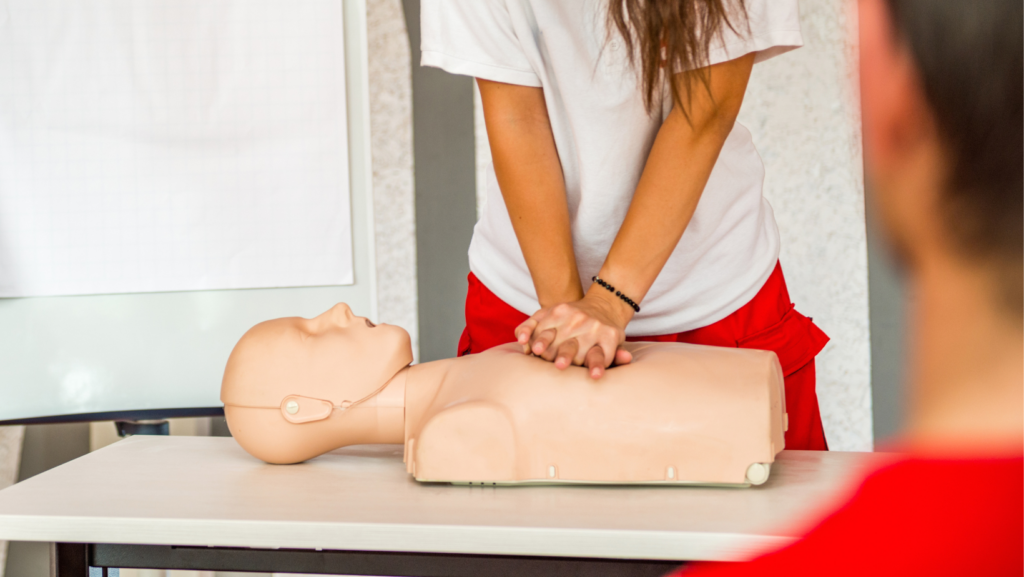When someone goes into cardiac arrest, many things need to occur quickly and it can be daunting to remember everything that needs to be done. We’ve provided a simple guide to cardiopulmonary resuscitation (CPR) to make things easier.
What is CPR?
According to the American Heart Association, CPR is a lifesaving measure performed when the heart stops beating. Performing CPR immediately can double or even triple the chances of survival after cardiac arrest.
What does CPR do?
Performing CPR keeps the blood flow in the body active, even if partially, which increases the chances of a successful resuscitation once trained medical personnel arrive.
How do you perform CPR?
To perform CPR follow these steps from the American Red Cross:
1. Check for surrounding safety, form an initial impression of the situation, and use personal protective equipment, if available.
2. If the person appears unresponsive, check for responsiveness, breathing, or other life-threatening conditions.
3. If the person remains unresponsive and is not breathing or is only gasping, call 9-1-1.
4. Ensure the person is on a firm, flat surface.
5. Give 30 chest compressions.
Two hands centered on the chest.
Keep shoulders directly over hands with elbows locked.
Push at least 2 inches deep.
Push at 100 to 120 beats per minute.
Allow the chest to return to normal position after each compression.
6. Give two breaths.
Open the airway to past-neutral position using the head-tilt/chin-lift technique.
Pinch the nose shut, take a normal breath, and make a complete seal over the person’s mouth with your mouth.
Ensure each breath lasts about one second and raises the chest; allow the air to exit before giving the next breath.
Note: If the first breath does not cause the chest to rise, re-tilt the head and ensure a proper seal before giving the second breath. If the second breath does not make the chest rise, an object may be blocking the airway.
7. Continue giving sets of 30 chest compressions and two breaths. Use an Automated External Defibrillator (AED) as soon as one is available. Minimize interruptions to chest compressions to less than 10 seconds.
Taking time to understand and learn the basics of how to perform CPR can save a life. Consult with a medical professional or certified CPR specialist to learn more.

